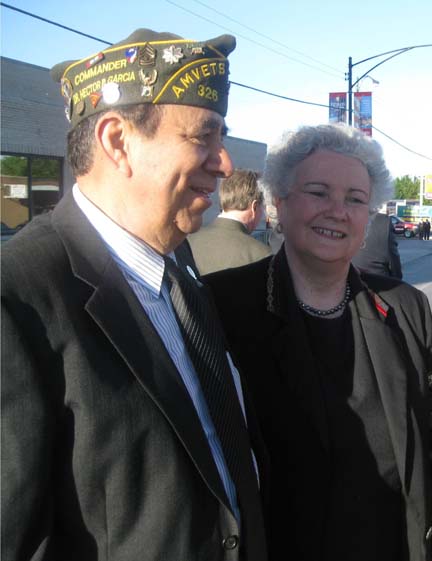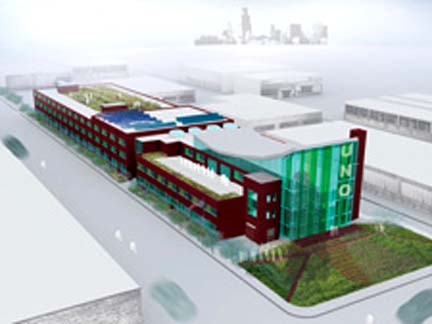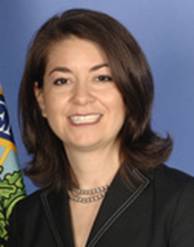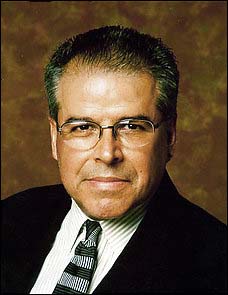While many of the following families' descendants immigrated to Cuba and other areas, some did remain in Florida, leaving their mark in the state's history through the Spanish and British periods, and finally, the American annexation. Most of the information concerning those who chose to settle in Cuba was taken from the volumes of the Historia de Familias Cubanas (HFC) written by Francisco Xavier de Santa Cruz y Mallen, el Conde de San Juan de Jaruco. However, data concerning a few of the surnames was also found in Genealogias Habaneras (GH), by Rafael Nieto y Cortadellas and the remainder, offered to the CGC by members Hilda Pomares, Teresa Sardinas, Martha Ibanez Zervoudakis and Nicolas de Cardenas. The information secured from the HFC and GH books note the volume and page number after the listing of the descendant surnames (DS). Please note the descendant surnames may also have their own chapter in the HFC volumes. Be sure to check them for additional clues or surnames in your search for a Florida Pioneer! Consider, as well, that these descendant surnames may only represent one line of that family and not everyone bearing this name. If you are lucky enough to find an ancestor among these early Floridians, we would greatly appreciate hearing from you and your progress towards your certification! Should any of you have data regarding additional surnames or find any errors or discrepancies, please feel free to contact us and remember to include your sources, as well. Your input is always welcomed.
1. ALVAREZ de GODOY: Pedro Alvarez de Godoy, m. 1619 to Petronila Canizares de Osorio. DS:
Trimino Caraveo, Lugo-Medina, Fernandez de Zaldivar, Gonzalez-Carvajal, Bueno del Castillo, Soto-Lino & Prados. HFC: Vols. IV, p. 347-348; VI, p. 351.
2. ARANDA: Pedro Aranda Avellanada, m. 1680 in La Habana to Josefa de Estrada y Velazquez de Cuellar. Their children were born in San Agustin. DS:
Garro Bolivar, Beltran de Santa Cruz, Cardenas, Santa Cruz, Mendinueta, Penalver, Barreto and Hernandez de la Rosa. HFC: Vols. I, pp. 62-63; II, p. 10-11; III, p. 59; IV, p. 262.
3. ARRIETA: Prudencio de Arrieta, m. before 1580 to Ana Gomez de Lara y Rodriguez. DS: Olivares, de las Alas, Calvo de la Puerta, Lorenzo, Redo Barroto, Pita de Figueroa, Valero y Guzman, Arancibia, Franco and Viamonte y Navarra. HFC: Vols. IV, p. 113-114;
V, pp. 285-286.
4. AYALA: Juan Francisco Ayala y Escobar, m. 1669 to Magdalena Diaz-Mexia y Sanchez. DS: Gomez de Algarin, Eligio de la Puente, Aparicio, del OImo, Rivero, Martorell, Baro Chavez, Lopez de Gamarra, Garcia deAyaleto and Coppinger. HFC: Vol. I, p. 215;
II, pp. 54, 57, 62; VIII, p. 218; V, p. 87.
5. CASTANEDA: Gaspar Castaneda y Rodriguez, b. 1704 in San Agustin, m. 1731 in San Agustin to Sebastiana de Vargas. DS: Sanchez, Garcia, Aguilar and Miranda. Cathedral Parish Records of St. Augustine, Florida. Genealogical files of Martha Ibanez Zervoudakis.
6. CORDERO-MACIAS: Juan Cordero-Macias y Ruiz de Maldonado, m. before 1700 to Ana Flores Amados. DS: Gonzalez-Osorio, Hita-Salazar, Villas, Sanchez de la Rosa, Gonzalez-Guevara, Gutierrez-Reina and Perez-Auber. HFC: Vol. VII, p. 119-124. 7
7. ELIGIO de la PUENTE: Antonio Nicolas Eligio de la Puente, b. in La Habana and m. 1719 in San Agustin to Agustina Clara Regidor. Their children were born in San Agustin. DS: Lopez-Villaverde, Pourmego de Mega, Alfaro, Sanchez-Casahonda, Lopez de Toledo, Rodriguez-Alfran, Peris-Puig, Martinez-Parreno, Alvarez-Lebrun, del Rio, Alvarez-Urrutia, Morales (Redo de Morales), Mur, Colas, Salazar-Sanchez de Carmona. HFC: Vol. V. p. 32, 87-92.
8. ESCOBEDO (Morales y Fiallo): Andres Morales m. to Leonor Fiallo. (Their children bear the surname Escobedo and were born in San Agustin.) DS:
Serrano, Ortiz, de la Guardia, Paredes-Mesa, Rivas, Garcia del Castillo, Garcia de Candias, Garcia-Garcia de Lagos, Perez-Molina, Santiago-Salazar, Velazquez de la Parra, Maniller, Azpeitia, Paton, Milian, Bello-Benut, Palacios, de la Parra, Orbeita, Disdier, Azcarate, Ruiz and Galceran. HFC: Vol. VII, p. 144-150.
9. ENTRALGO: Juan Bautista Entralgo e Hijuelos, m. c. 1800 to Felicitas Almanza y Perez. DS: Coppinger, Lastres, Avalos, Alacan, Vianello, Lorenzo, Borges and Moreno. HFC; Vols. P. 110; IX, p. 171. GH: Vol. I, pp. 222, 227.
10. FLORENCIA: Mateo Luis de Florencia, m. before 1600 to Luisa de los Angeles. DS: Alderete, Ruiz-Canizares, Arguelles, Bustos, Gomez-Pinto, Ruiz-del Moral, Crisostomo, Diaz-D'Avila, Arransate, Aranguren, Estevez-Carabuena, Cardenas, Salvador, Ascencio, Aguilar, Suarez, Rodriguez-Alfran, Mora, Leon, Roldan, Garcia de Lara, Pacheco-Salgado, Pedroso, Garcia-Barrera, Monleon, Silvera, del Pino, Diaz-L6pez, Rodriguez-Acosta, de la Paz, Remirez de Estenoz, Perez de Villarreal, Zayas-Bazan, Nunez del Castillo, Montalvo, Herrera, Seidel, Loinaz, Quintana, Lombillo, and Zequeira. HFC: Vols. II, p. 53, 314-325; V, p. 250; IX, p. 78-89.
7. ELIGIO de la PUENTE: Antonio Nicolas Eligio de la Puente, b. in La Habana and m. 1719 in San Agustin to Agustina Clara Regidor. Their children were born in San Agustin. DS: Lopez-Villaverde, Pourmego de Mega, Alfaro, Sanchez-Casahonda, Lopez de Toledo, Rodriguez-Alfran, Peris-Puig, Martinez-Parreno, Alvarez-Lebrun, del Rio, Alvarez-Urrutia, Morales (Redo de Morales), Mur, Colas, Salazar-Sanchez de Carmona. HFC: Vol. V. p. 32, 87-92.
11. GARCIA de TOVAR: Nicolas Garcia de Tovar, b. c. 1665 in Mexico, m. 1686 in San Agustin to Maria Dominguez de Viana y Arias, b. in San Agustin in 1665. DS: Basurto (Basulto?), Velazquez, Miranda-Romero. Cathedral Parish Records of St. Augustine, Florida. Genealogical files of Martha Ibanez Zervoudakis.
12. GONZALEZ-OSORIO: Manuel Gonzalez, m. before 1690 to Claudia Osorio y Lopez de Cabrera. This surname has lines from two brothers who both lived in San Agustin.
a. Tomas Gonzalez-Osorio m. before 1704 in San Agustin to Francisca Rodriguez. DS: Escobar. b. Luis Gonzalez-Osorio m. 1715 in San Agustin to Juana de Guevara. DS: Cordero-Macias, Mallen, del Prado and Vizcaino. HFC: Vols. II, p. 262; V, p. 68-69; VII, p. 67.
13. GUEVARA (Ladron de Guevara): Juan Manuel Ladron de Guevara y Rosa, m. 1693 in San Agustin to Josefa Dominguez de Viana y Arias de Hechavarria. DS: Gonzalez de Osorio, del Pino, Gonzalez-Hernandez, de las Hijuelas and Molina. HFC: Vol. IX, p. 167-168.
14. HERRERA: Juan Maria Herrera, m. after 1800 to Maria del Rosario Carter. DS: Cantero and Garcia-Castro. HFC: Vols. II, p. 218-219; III, p. 300.
15. HITA-SALAZAR: Pablo Hita y Salazar, Governor General of San Agustin in 1675, m. to Juana Davila.
This surname has lines from three brothers.
a. Tomas de Hita-Salazar y Davila, b. in Veracruz, Mexico; m. 1691 in San Agustin to Lorenza de los
Rios Enriquez y de la Vera. DS: Leon-Rivera, Florencia, Eligio de la Puente, and Seco.
b. Juan de Hita-Salazar y Davila, m. 1681 in San Agustin to Antonia Menendez-Marquez y Ruiz-Mexia,
born 1666 in San Agustin.
c. Pedro de Hita-Salazar y Davila m. 1689 in San Agustin to Catalina Gertrudis de Leon y Arguelles, b.in San Agustin. DS: Benedit-Horruitiner, Sandoval,
de Fuentes, de Arguelles, de la Torre, Lozano, Campos, Pren, and Almirante. HFC: Vols. II, p. 272;
VII, pp.121, 209; VIII, p. 11; IX, p. 84. Genealogical files of Teresa Sardinas and Nicolas de Cardenas. "Genealogia de Pablo Hita y Salazar" an unpublished study by Alvaro A. Garcia-Castro.
16. HORRUITINER (Benedit-Horruitiner): Pedro Benedit-Horruitiner, m. 1637 in San Agustin to Maria Ruiz de Canizares. DS: Leon, Primo de Rivera, Perez de Acal, Hita-Salazar, Mendez-Marquez, Martinez-Lemus, Ximenez de Guzman, Ancona, Lopez-Ameno, Lopez del Castillo, Bravo, Badell, Ganivet, Simon, Haille, Carrejas, Catasus, Illas, Larrea, Lanz, Lopez de Villavicencio, Miranda, Orta, Lopez-Cuervo, Norris, Ziburu, Marquez-Sterling, Garcia-Barrera, Cabello,
Riera, Teixeira,
Ordaz, Bassave,
Gonzalez de la Torre, Molto, Fuero,
Ochoa, Diehl,
Rasco, Montoro,
Canosa, Kohly, Crespo,
Cardona, Nodarse,
Erice, Borbon, Valdes-Fauli,
Garcia-Menocal, Bacallao,
Gutierrez de la Solana, Campos, Tagle,
Angueira, Callejas, Pietri,
Millan, Rodon,
Portuondo, Bernaldez,
Figueroa, Aguero, Navarro,
Herrera, Caballero, Vidal.
HFC: Vols. II, p. 179-180; III, pp. 73, 177-178; V, p. 4; VI,
p. 175; VII, pp. 76, 206-219; VIII, p. 51. GH:
II, p. 339. Genealogical files of Nicolas de Cardenas.
17. JUNCO,
del: Bartolome Lopez de Gavira,
m. 1598 to Maria del Junco. (Two of their children took the maternal surname of del
Junco.) DS: Sevilla-Guerrero, Salinas,
Lopez de Tapia, Amador,
Villegas, Montero, Rodriguez de Aguilar,
Velasco, Rodriguez del Junco, Rodriguez
de Alpizar, Ribeiro-Netto
(Rivero-Nieto), Pereda, Diaz-Coello,
Dejado-Villate, Rossie, Diaz-Vigot,
Lugo, Fernandez
del Campo, Morales, Barroso,
Vazquez, Macias,
Munoz de Baena,
Herrera, Folch, Cordero,
Valverde, Anicourt,
Saint-Maxent, Arango, Garcia-Menocal,
Escanes, Rodriguez-Morejon, Morejon,
Gener,,LaMadrid, Fuentes, Unzueta, Ortiz,
Gomez-Pastrana, Zapatin,
Campos, Hernandez-Otero, Sanchez-Hill,
Fernandez-Oliva, Mir,
Aranda, Morales-Bejar,
Pique, Andre, del Portillo,
Turbiano, Lopez-Vasconcellos,
Gobel, Astray, Montenegro, Andreu,
Bolivar, Fonts, Bulle, Forcade
and O'Farrill. HFC: Vols. I,
p. 83; III, p. 345; VII, p. 219.
18. LETURIONDO:
Domingo de Leturiondo y Jonlus
de Arteaga, b. Azpeitia,
Guipuzcoa, Spain, m. in 1648 to Maria
Solana y Perez, b. San Agustin. DS: Chagaray
(Echagaray), Espinosa,
Leyva, Hernandez-de
los Reyes, Morales, Garcia-Gonzalez,
Gonzalez de Roxas, Rodriguez-de
los Reyes, Hernandez-del Portal, Treto,
Lanier, Herrada,
Garcia-Hurtado de Mendoza,
Rodriguez-Vidal, Perez-Gonzalez,
Hidalgo-Gato, Pombrol,
Gomara, Pomares
and Fraga. Genealogical files of
Hilda Pomares and Nicolas de Cardenas.
19.
MENENDEZ-MARQUEZ (Menendez deAviles).
Pedro Menendez-Marquez m. before 1600 to Mayor Arango. DS: Suarez
de Gongora, Lujan,
Melendez, Cardenas, Perez-Morera,
Aguirre, Hita-Salazar, Romo de Uriza,
Benedit-Horruitiner, Diaz-Mexia, Melo,
Sanchez de Uriza and Rodriguez-Roso.
HFC: Vol. II, p. 268-274.
20. MIRANDA-RIVERO:
Pedro Joseph Nolasco Miranda y Rivero,
b. 1773 in La Habana, m. 1807 in San
Agustin to Maria del Rosario Sanchez y Castaneda*b.
1784 in San Agustin. DS: de la Maza,
Villaverde.Robiou (Robion) de Mareuil
and Miranda. Cathedral Parish Records of St. Augustine, Florida.
Genealogical files of Martha Ibanez Zervoudakis.
21. MIRANDA-ROMERO: Antonio Matias Miranda y Romero, b. 1697 in Sevilla, Spain; d. 1745 in San Agustin; m. 1724 in San Agustin to Antonia Garcia de Tovar y Dominguez de Viana, b. 1707 in San Agustin. DS: , Sanchez, Almanza, Diaz, Dias, Lorente, Sinck, Torres, Solana and Millares. Cathedral Parish Records of St. Augustine, Florida. Genealogical files of Martha Ibanez Zervoudakis.
22. NIETO de CARJAVAL: Bernardo Nieto de Carvajal y Paz de Alarcon, m. 1687 in San Agustin to Maria Gertrudis Naranjo de la Cruz y Hernandez de la Cruz. DS: Medina, Trabuda, Escobedo-Cabrera, Florencia, Arteaga and Marquez. HFC: Vol. VII, pp. 146, 227-230.
23. PEREZ de AYALA: Francisco Perez de Ayala, b. in San Agustin, m. 1718 to Agustina Zayas-Bazan. HFC: Vol. IV, p. 416.
24. PONCE de LEON: Nicolas Ponce de Leon, m. in Sevilla, Spain to Estefania D'Avila y Mendez. Their children were born in San Agustin. (Note it is unknown whether or not this family is related to that of the conquistador, Juan Ponce de Leon, the discov-erer of Florida and Governor General of Puerto Rico. Should anyone have information confirming this rela-tionship, the CGC would greatly appreciate your find-ings.) DS: Sigarroa, Disidio, Cazoria Torregrosa, Rodriguez-Roso, Quintero (Gonzalez de Berrejis), Fernandez-Lopez, Rodriguez del Tore, Lopez de Mera, Crisostomo de Lara, Alvarez-Franco, Rueda, Gomez-Pinto, Armenteros, de los Reyes, del Pueyo, Anaya, Benedit-Horruitiner, Rivas, Gaztelumendi and Santa Cruz. HFC: Vol. I, p. 265-274.
25. REPILADO: Juan Jose Repilado y Avero, b. in San Agustin, m. 1780 to Rosa Ramos y Ferrer, b. Santiago de Cuba. DS: Barcelo, Portuondo, Justiz, Tejada, Palacios-Saldurtun, Valiente, Vinent and Duany. HFC: Vols. I, p. 302; II, p. 240, IV, p. 151; VI, p. 218; IX, p. 331.
26. REYES, de los: Gaspar de los Reyes, m. 1621 in San Agustin to Maria Rica. DS: Arritola, Solana, Car, Garcia-Melendez, Nieto de Carvajal, Moyano de Salas and Escobedo-Cabrera. HFC; Vo/s. VII, pp. 121, 145; VIII, p. 304-305.
27. RUIZ de CABEZA: Martin Ruiz de Cabeza, m. to Manuela de Arango. DS: Ruiz de Pastrana and Diaz-Pimienta. HFC: Vol. IV, p. 139.
28. SAAVEDRA (Gonzalez de Saavedra): Rafael Gonzalez de Saavedra y Espinosa, m. before 1790 to Maria Luisa Gonzalez y Montes de Oca, b. in San Agustin. HFC: Vol. IV, p. 289-290
29. SANCHEZ-HILL: Bernardino Sanchez y Espinosa, b. in La Habana, m. 1799 in San Agustin to Maria-Antonia Hill, b. in South Carolina, USA. DS:
Manduley, Valiente, Marquez. HFC; Vols. VII, p. 234; IX, p. 183, 187. Genealogical files of Nicolas de Cardenas
30. SOLANA: Alonso Solana, m. 1644 in San Agustin to Maria Antonia Francisca Perez Arica (Rica). (DS):
Interiondo (Leturiondo?), Martin-Quintero, Romero, Angel , de los Reyes, Fuentes, de las Nieves, Miranda, del OImo, Perez-Cabrera, Salas, Fernandez de la Paz, Barba, Santiago, Escalona, Castro, de la Cruz-Gonzalez, Cabrera, Monzon, Diaz-Marrero, Gomez-Quevedo, Espinosa-de los Reyes, Biedma, Reyes-Gavilan, Enriquez de Camargo, Rodriguez-Escalona, Fernandez-Castro, de los Rios Enriquez, Florencia, Fernandez-Urrutia, Enriquez de Camargo, de los Reyes-Ximenez and Cordero-Macias. HFC:
Vols. VII, pp.121, 330; VIII, p. 303-308. GH: Vol. I, p. 89. Genealogical files of Nicolas de Cardenas
31. TORRES-AYALA: Laureano Torres-Ayala y Quadros, b. in Sevilla and m. in La Habana, 1687, to Catalina Gertrudis Bayona y Chacon. Their children were born in San Agustin. DS: Chacon, Herrera-Berrio, O'Farrill, Guma, Garcia-Palacios, Ocejo, Pulido, Cardenas, Menendez, Roca de Togores, Zaidivar, Beltran de Santa Cruz, Arango, Montalvo . HFC; Vol. I, pp. 35-36, 72, 371. Genealogical files of Nicolas de Cardenas
32. VILLAVERDE: Andres de Villaverde, m. before 1733 to Luisa de Leon y Florencia. DS: Rodriguez-Paton, Castilla, Menendez-Marquez, Benedit-Horruitiner and Herrera. HFC; Vo/s. /, p. 10; VIII, p. 330-332.
33. YERA: Lorenzo de Yera y Mendiola, b. 1601 in San Agustin, m. to Ana Consuegra y Morales, b. in Puerto Principe (Camaguey), Cuba. DS: Sarduy, Rodriguez de Arciniega, Martin de San Remo, Grana, Blanco, Santa Maria, Mesa, Gonzalez de Avila, Farto de Aguiar, Laredo, Pelaez, Mora, Cruz-Prieto and Gil. Genealogical files of Nicolas de Cardenas.
Although the overwhelming majority of Cuban families whose ancestors can be traced to Florida did originate in Saint Augustine, there were others whose ancestors are found in Pensacola, Florida, as
follows:
1. DOMINGUEZ: Juan Jose Dominguez y Galvez y Aguilar, m. in La Habana c.1800 to Maria Gertrudis Otero y.Roso. Their children were born in Pensacola. DS; Granados, Plazaola, Castro-Palomino, Angulo, Ruiz, Gamba and Patron. HFC; Vols. II, p. 121-123;
VII, p. 91. Genealogical files of Nicolas de Cardenas.
2. SAINT-MAXENT: Prior to one branch's move to Florida, this particular family's early origins are found in New Orleans, Louisiana, USA. Francisco Maximiliano Saint-Maxent m. 1805 in Pensacola to Maria Irene Felicitas Folch y del Junco. DS:
Chappotin, O'Farrill, Garcia de Lavin, Broch, Cantera, Justiniani, Cardenas and Fernandez de Velasco. HFC: Vols. II, p. 78, III, p. 346; IV, p. 335-336.
3. SALAZAR: Diego de Salazar, m. before 1800 to Maria Josefa Hernandez. This surname has lines
from two brothers both born in Pensacola.
a. Jose Salazar y Hernandez m. before 1855 to Irene Salome Hidalgo-Gato y Tellez. DS:
Vega
b. Ramon Salazar y Hernandez m. to Maria Ramona Rodriguez de Morejon. HFC: Vol. VIII, p. 288.
4. LARIN: Miguel Larin, c. 1800 to Maria de la Concepcion Caneda. DS: Remirez de Estenoz. Their daughter, Micaela was born in Pensacola. HFC: Vol. IV, p. 322.
Another great source for Spanish colonial Florida surnames is found in the book Censos, Padrones y Matriculas de la Poblacion de Cuba Siglos 16, 17 y 18, by Peter E. Carr, who provides a padron of floridanos who emigrated from the peninsula during the first exodus, arriving in Cuba in 1763. The padron categorizes the list by race and family groups. In addition to most of the families mentioned above, some of the surnames our esteemed friend, Peter Carr, includes are: Izquierdo, Ronquillo, Grogan, Clos, Vilches, Picle, Cuestas, Jaramo, de los Santos, Calistero, Manresa, Rondon, Manaca, Monrroy (Monroy), Chez, Abrantes, Ortega, Quintana, Brito, Lozano, Zevallos (Cevallos), Boza, Perdomo, Flores, Trillana, Betancur (Betancourt/Bethencourt), Ventura, Ramos, Corral, Febles, Ferrera, Monson, Blanco, Gallardo, Gonzalez de Arocha, Delgado, Montes de Oca, Infante, Duran, Tovar, Navarro, Magro, Arriola, Millares, Zerpa, Farias, Llerendo, Orozco, Acevedo, Grajales, Mellar, Carvallo, Garcia-Ceiba, Briza, Ronquillo, Aldana, Cantal, Santoyo, Urrutia, Barrera, Caballero, Aleman, Frias, Salamanca, Alcantara, Callejas, Yanez, Cardoso, Jordana, Contrera, Abero and
Barrabi.
|

 In 1984, community leaders and local priests became
involved in reforming Chicago schools.
In 1984, community leaders and local priests became
involved in reforming Chicago schools.










 Maggie Rivas-Rodriguez, director of the U.S. Latino & Latina WWII Oral History Project and associate professor of journalism at UT, indexes a book for the oral history project.
Even though some Mexican-American soldiers felt they were a part of a brotherhood while serving in World War II, they faced civil unrest when they came back to the U.S., according to a new museum exhibit directed by UT faculty.
Maggie Rivas-Rodriguez, director of the U.S. Latino & Latina WWII Oral History Project and associate professor of journalism at UT, indexes a book for the oral history project.
Even though some Mexican-American soldiers felt they were a part of a brotherhood while serving in World War II, they faced civil unrest when they came back to the U.S., according to a new museum exhibit directed by UT faculty.












 As
a teenager, long before Enriqueta Vasquez became a writer and
activist, she wrote her first letter to complain against the
injustice she saw around her while growing up in the Southwest. Why
was she, a Mexican American, not allowed to eat in local
restaurants, while her brothers were fighting to preserve their
country's principles of freedom and democracy? Why were Mexican
Americans good enough to fight and die for their country but not
good enough to be treated as equals at home? And so began Enriqueta
Vasquez's life-long fight for justice. Highlighting the involvement
of women in the Chicano Movement, this anthology combines for the
first time in one volume the columns written by Enriqueta Vasquez
from 1968-1972 for the path-breaking Chicano newspaper, El Grito del
Norte. Enriqueta Vasquez's columns written during the peak of the
civil rights movement provided a platform for her fierce but hopeful
voice of protest. In her column, entitled Despierten Hermanos!
[Awaken, Brothers and Sisters!], she used both anger and humor in
her efforts to stir her fellow Chicanos to action. Drawing upon her
own experiences as a Chicana, she wrote about such issues as racism,
sexism, imperialism, and poverty, issues that remain pressing today.
With introductory and concluding essays by editors Lorena Oropeza
and Dionne Espinoza, this collection of 44 of Vasquez's original
articles arranged thematically into six chapters seeks to inform and
inspire a new generation. Each is annotated to clarify references to
people and events, and the editors have included English-language
translations of any essays that appeared originally in Spanish. The
text is complemented by six drawings by activist and artistRini
Templeton that originally appeared in El Grito del Norte. The volume
includes a foreword by John Nichols and a preface by Enriqueta
Vasquez.
As
a teenager, long before Enriqueta Vasquez became a writer and
activist, she wrote her first letter to complain against the
injustice she saw around her while growing up in the Southwest. Why
was she, a Mexican American, not allowed to eat in local
restaurants, while her brothers were fighting to preserve their
country's principles of freedom and democracy? Why were Mexican
Americans good enough to fight and die for their country but not
good enough to be treated as equals at home? And so began Enriqueta
Vasquez's life-long fight for justice. Highlighting the involvement
of women in the Chicano Movement, this anthology combines for the
first time in one volume the columns written by Enriqueta Vasquez
from 1968-1972 for the path-breaking Chicano newspaper, El Grito del
Norte. Enriqueta Vasquez's columns written during the peak of the
civil rights movement provided a platform for her fierce but hopeful
voice of protest. In her column, entitled Despierten Hermanos!
[Awaken, Brothers and Sisters!], she used both anger and humor in
her efforts to stir her fellow Chicanos to action. Drawing upon her
own experiences as a Chicana, she wrote about such issues as racism,
sexism, imperialism, and poverty, issues that remain pressing today.
With introductory and concluding essays by editors Lorena Oropeza
and Dionne Espinoza, this collection of 44 of Vasquez's original
articles arranged thematically into six chapters seeks to inform and
inspire a new generation. Each is annotated to clarify references to
people and events, and the editors have included English-language
translations of any essays that appeared originally in Spanish. The
text is complemented by six drawings by activist and artistRini
Templeton that originally appeared in El Grito del Norte. The volume
includes a foreword by John Nichols and a preface by Enriqueta
Vasquez.



 ----
----












